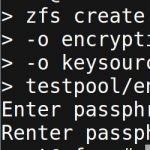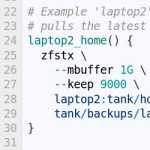
How-To: Using ZFS Encryption at Rest in OpenZFS (ZFS on Linux, ZFS on FreeBSD, …)
An upcoming feature of OpenZFS (and ZFS on Linux, ZFS on FreeBSD, …) is At-Rest Encryption, a feature that allows you to securely encrypt your ZFS file systems and volumes without having to provide an extra layer of devmappers and such. To give you a brief overview of what the feature can do, I thought I’d write a short post about it.
The current ZFS encryption implementation is not (yet) merged into the upstream repository (as of January 2017). There is a pretty big pull request which is still being reviewed, but because the feature is so incredibly cool (and because my colleague Tom Caputi developed it), I thought a sneak preview is absolutely necessary.









Recent Comments